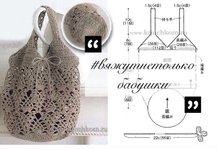
The patterns that can be knitted can not be counted, however, many of them can be included in certain categories according to one or another characteristic, and thus choose the right motive for your product. One of these categories can be called simple patterns with knitting needles. These patterns are easy enough to knit, the main thing is to treat the process with care, observing the diagrams and a detailed description of the progress of work.
Simple knitting patterns will look appropriate and harmonious on a variety of products for women, men and children: mittens, socks, hats, mittens, snoods, sweaters, cardigans. It can be either simple relief patterns, nets, openwork patterns, or braids with interweaving.
Simple knitting patterns with description and patterns.
The fact that they are simple does not mean at all that they are ugly, or that it is boring to work with them. There are many simple patterns for knitting, which are able to give things originality, not inferior in this matter to more complex patterns in design. It is all the more interesting to choose a suitable pattern from this colorful variety.
A selection of detailed patterns and descriptions of knitting simple patterns with knitting needles will help knitting inexperienced needlewomen to master, and professional knitters in this article will be able to find many interesting options for patterns for their products. Let's start by looking at patterns from the lightest to the more complex.
Knitting for beginners
The ability to knit provides the needlewoman with an entertaining hobby and a continuous improvement in her skills in this field, because each new product is a challenge to herself, an uninterrupted process of learning and developing the best qualities. However, you always need to start small so that you don’t “burn out” ahead of time, and for this you will come in handy for simple patterns with knitting needles for beginners.

Consider the pattern of the front and back loops. We knit according to the scheme as follows: start with loops before rapport, repeat the loop of rapport as many times as necessary, end with loops after rapport.
Pattern repeat 2 loops + 1 loop before rapport + 4 loops after rapport + 2 edge loops.
In height, repeat the pattern from 1 to 4 rows.

Another interesting and simple knitting pattern, which is performed according to the above diagram and description.
In height, repeat the pattern from 1 to 4 rows. Pattern repeat - 4 loops + 1 loop before rapport + 4 loops after rapport + 2 edging.

Another simple pattern of front and back loops. You need to act according to the scheme and description.
In height, repeat the pattern from 1 to 15 row. Rapport of a pattern of 13 loops + 2 edging. In the wrong rows, knit in a pattern.
Beautiful openwork patterns
Simple knitting patterns can look interesting and have beautiful openwork shapes. They are also simple in execution, but at the same time look original and fresh. These include: nets, lace braids, rhombuses, snakes, waves, leaves, floral motifs and much more. Consider these simple openwork patterns with knitting needles - patterns and descriptions for beginners are also available, as well as for more experienced craftswomen.

The rapport is 12 rows and 6 loops. To start knitting a sample, we collect a multiple of six. Only odd rows are indicated on the diagram, all even ones, such as 2, 4, 6, 8, 10, and 12, fit in the pattern as the loops go.
- 1st row: * 2 loops together front with an inclination to the right, yarn, 2 wrong seams, yarn, 2 loops together front with an inclination to the left *;
- 3 row: * 1 front loop, 4 wrong loops, 1 front *;
- 5 row: * 1 front loop, 4 wrong loops, 1 front *;
- 7 row: * 1 wrong side loop, double crochet, 2 loops together front with tilt to the left, 2 loops together facial with tilt to the right, crochet, 1 wrong loop *;
- 9 row: * 2 wrong loops, 2 front loops, 2 wrong loops *;
- 11 row: * 2 wrong loops, 2 front loops, 2 wrong loops *.
We continue to knit the pattern, repeating rows from the first to twelfth.

Edge loops are not involved in the description and scheme.
Rapport pattern 24 rows in height and 12 loops in length.
Abbreviations and description of the scheme:
AND - purl loops;
L - front loops;
N - yarn.
Dial the number of loops a multiple of 12 and add 2 edge loops.
- 1st row: * 2I, H, 1L, H, 2I, 2L, 2 together with L with a slope to the right, 3L *;
- 2 row and all other even rows knit according to the pattern;
- 3 row: * 2I, 1L, H, 1L, H, 1L, 2I, 2L, 2 together with L with a slope to the right, 2L *;
- 5 row: * 2I, 2L, H, 1L, H, 2L, 2I, 2L, 2 together with L with a slope to the right, 1L *;
- 7 row: * 2I, 3L, H, 1L, H, 3L, 2I, 2L, 2 together with L with a slope to the right *;
- 9 row: * 2I, 2L, 2 together with L with a slope to the right, 5L, 2I, 1L, 2 together with L with a slope to the right *;
- 11 row: * 2I, 2L, 2 together A with an inclination to the right, 4L, 2I, 2 together A with an inclination to the right *;
- 13 row: * 2I, 2L, 2 together with L with a slope to the right, 3L, 2I, N, 1L, H *;
- 15 row: * 2I, 2L, 2 together with L with a slope to the right, 2L, 2I, 1L, H, 1L, H, 1L *;
- 17 row: * 2I, 2L, 2 together with L with a slope to the right, 1L, 2I, 2L, H, 1L, H, 2L *;
- 19 row: * 2I, 2L, 2 together with L with a slope to the right, 2I, 3L, H, 1L, H, 3L *;
- 21 row: * 2I, 1L, 2 together A with an inclination to the right, 2I, 2L, 2 together A with an inclination to the right, 5L *;
- 23 row: * 2I, 2 together A with an inclination to the right, 2I, 2L, 2 together A with an inclination to the right, 4L *.
Repeat the pattern from 1 to 24 row.

The rapport is 12 rows. We loop the number of loops, which is divided by the number five (i.e., a multiple of five) + 2 edge loops.
The pattern between the asterisks indicates the repetition of the pattern as many times as necessary.
We knit even rows, as the loops go, according to the pattern.
- 1st row:* 1 L, 3 I, 1 L *;
- 3 row: * H, 1 L, 2 together with I. loop, 1 I, 1 L *;
- 5 row: * 1 And, Н, 2 loops together with L. with an inclination to the left, 2 loops together with L. with an inclination to the right, yarn *;
- 7 row:* 2 And, 2 L, 1 And *;
- 9 row:* 2 together I. loop, 1 L, H, 1 L, 1 AND *;
- 11 row: * 2 loops together with L. with an inclination to the right, Н, 1 Л, Н, 2 loops together with L. with an inclination to the left *.
Scarf or Snail Ideas
For beginners in knitting, you can choose a simple knitting pattern for a scarf. It is also a good idea to knit snood with knitting needles in a simple pattern. For knitting, the following simple, but interesting patterns are suitable.

If the diagram on the right shows odd numbers, then there are no wrong rows on it. We knit them according to the drawing.
Pattern repeat -14 loops + 2 loops after rapport + 2 hem. In the wrong rows, knit in a pattern. In height, repeat the pattern from 1 to 31 rows.

Repeat the rapport in height from 1 to 12 row.
Edge loops are not indicated in the diagram.
To knit this pattern, you need to dial the number of loops multiple of 6 + 2 edge.
Simple embossed patterns
Knitting a simple embossed pattern with knitting needles is also a simple job, but the result will delight the hostess and her loved ones. Relief simple patterns are very popular on any knitted clothes, so there are a lot of ornaments.

Pattern repeat 9 loops wide, repeat knitting from 1st to 13th row.
The first row is purl and knit with purl loops. All the rest of the odd rows are the wrong ones, and the even ones are the front rows.

Abbreviations and description of the scheme:
AND - purl loops;
L - front loops;
N - yarn.
If 2 loops are written together with the front loop (L), then you need to knit with a slope RIGHT.
Braid 3\3 we knit like this: 3 loops move to extra. knit and leave before work, knit the following 3 front loops, and then 3 loops with extra. knitting needles face.
Rapport 16 loops in length and 24 rows in height. Edge loops are not included in the description and in the diagram. Dial the number of loops a multiple of 16 and add 2 edge.
- 1st row: * 1I, 6L, 2I, (2 together with a L loop, Н) - 3 times, 1I *;
- 2 row and all even rows: knit in a pattern, as the loops go;
- 3 row: * 1I, 6L, 2I, 1L, (2 loops together L, H) - 2 times, 1L, 1I *;
- 5 row: * 1I, braid 3 \ 3 (description see above), 2I, (2 together A, H) - 3 times, 1I *;
- 7 row: * 1I, (2 together L, H) - 3 times, 2I, 1L, (2 loops together L, H) - 2 times, 1L, 1I *;
- 9 row: * 1I, 1L, (2 loops together A, H) - 2 times, 1L, 2I, (2 loops together A, H) - 3 times, 1I *;
- 11 row: * 1I, (2 together L, H) - 3 times, 2I, 1L, (2 loops together L, H) - 2 times, 1L, 1I *;
- 13 row: * 1I, 1L, (2 loops together A, H) - 2 times, 1L, 2I, braid 3 \ 3, 1I *;
- 15 row: * 1I, (2 together L, H) - 3 times, 2I, 6L, 1I *;
- 17 row: * 1I, 1L, (2 loops together L, H) - 2 times, 1L, 2I, 6L, 1I *;
- 19 row: * 1I, braid 3 \ 3, 2I, 6L, 1I *;
- 21 row: * 1I, 6L, 2I, 6L, 1I *;
- 23 row: * 1I, 6L, 2I, braid 3 \ 3, 1I *.
Repeat from 1 to 24 row.

The pattern is 16 stitches long and 24 stitches. Edge loops are not included in the description and in the diagram.
- 1st row: * 8 front loops, (2 together front with a slope to the right, yarn) - 4 times *;
- 2 row and all even rows: fit according to the drawing;
- 3 row: * 8 front loops, (double crochet, 2 together front with an inclination to the left) - 4 times *;
- 5 row: like 1 row;
- 7 row: * braid - remove 4 loops on extra. knit and leave before work, knit the following 4 front loops, and then loops with extra. knitting needles, (double crochet, 2 together with knitting to the left) - 4 times *;
- 9 row: like 1 row;
- 11 row: like 3 row;
- 13 row: * (2 together front with a slope to the right, yarn) - 4 times, 8 front loops *;
- 15 row: * (double crochet, 2 together with the front inclined to the left) - 4 times, 8 front loops *;
- 17 row: like 13 row;
- 19 row: * (double crochet, 2 together with the front with a tilt to the left) - 4 times, braid - 4 loops removed for extra. knit, leave at work, knit the following 4 front loops, and then loops with extra. knitting needles *;
- 21 row: like 13 row;
- 23 row: like 15 row.
Children's patterns
Knitting simple baby patterns with knitting needles is as easy as knitting adult clothes. Only important choose the right yarn for future baby clothes: it should be acrylic or acrylic mixed with wool (but not 100% wool), it is advisable to pay attention to the hypoallergenicity of the yarn. The ornament itself for children’s clothing is really best chosen from a rich variety of simple patterns, and not from complex weaves and patterns.

Pattern repeat is 4 loops and 8 rows.
- 1st row: facial loops;
- 2 row: back loops;
- 3 row: * 1 persons., 1 p. To remove (thread at work), 2 persons. *;
- 4 row: * 2 out., 1 p. Remove (thread before work), 1 out. *;
- 5 row: facial loops;
- 6 row: back loops;
- 7 row: * 3 persons., 1 p. Remove (thread at work) *;
- 8 row: * 1 p. Remove (thread before work), 3 out. *
Repeat from 1st to 8th row.

Pattern repeat is 2 loops and 4 rows.
- 1st row: * 1 out., 1 p. Remove (thread before work) *
- 2 row: back loops;
- 3 row: * 1 p. Remove (thread before work), 1 out. *;
- 4 row: back loops.
Repeat from 1st to 4th row.
Video lesson
To make knitting simple patterns with knitting needles even more visual and quick, you can see the whole process of creating an ornament from beginning to end, which is performed by professional craftsmen. For example, the following video perfectly demonstrates how to properly knit a simple pattern even for beginners to knitters.
Video lesson: a simple knitting pattern


























